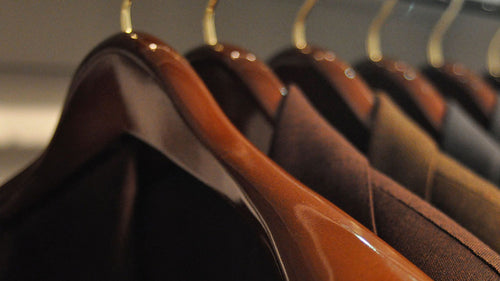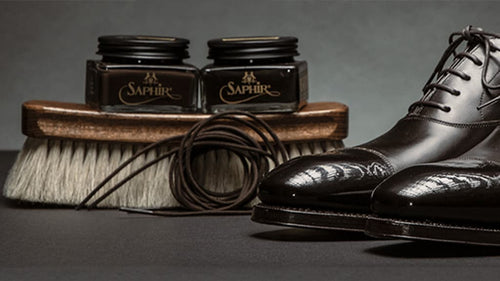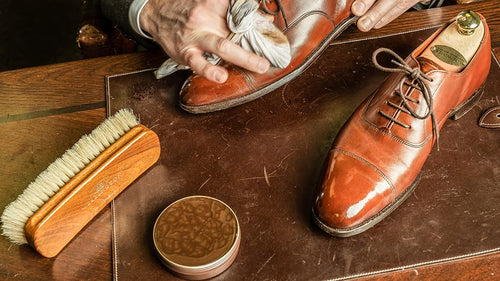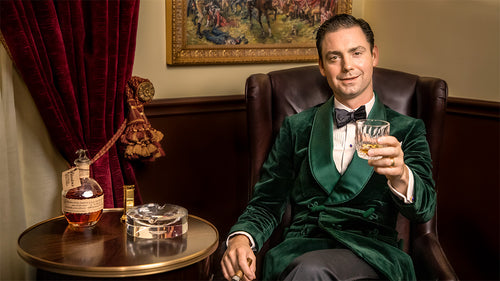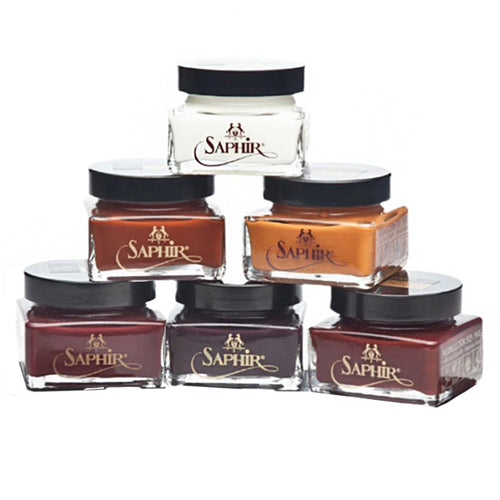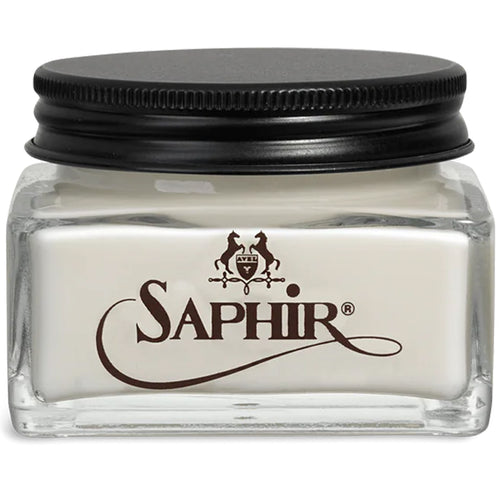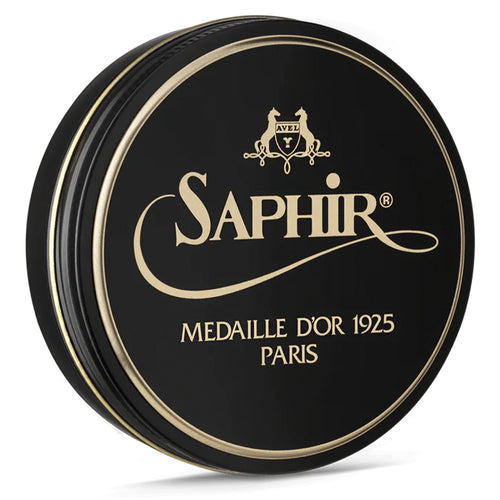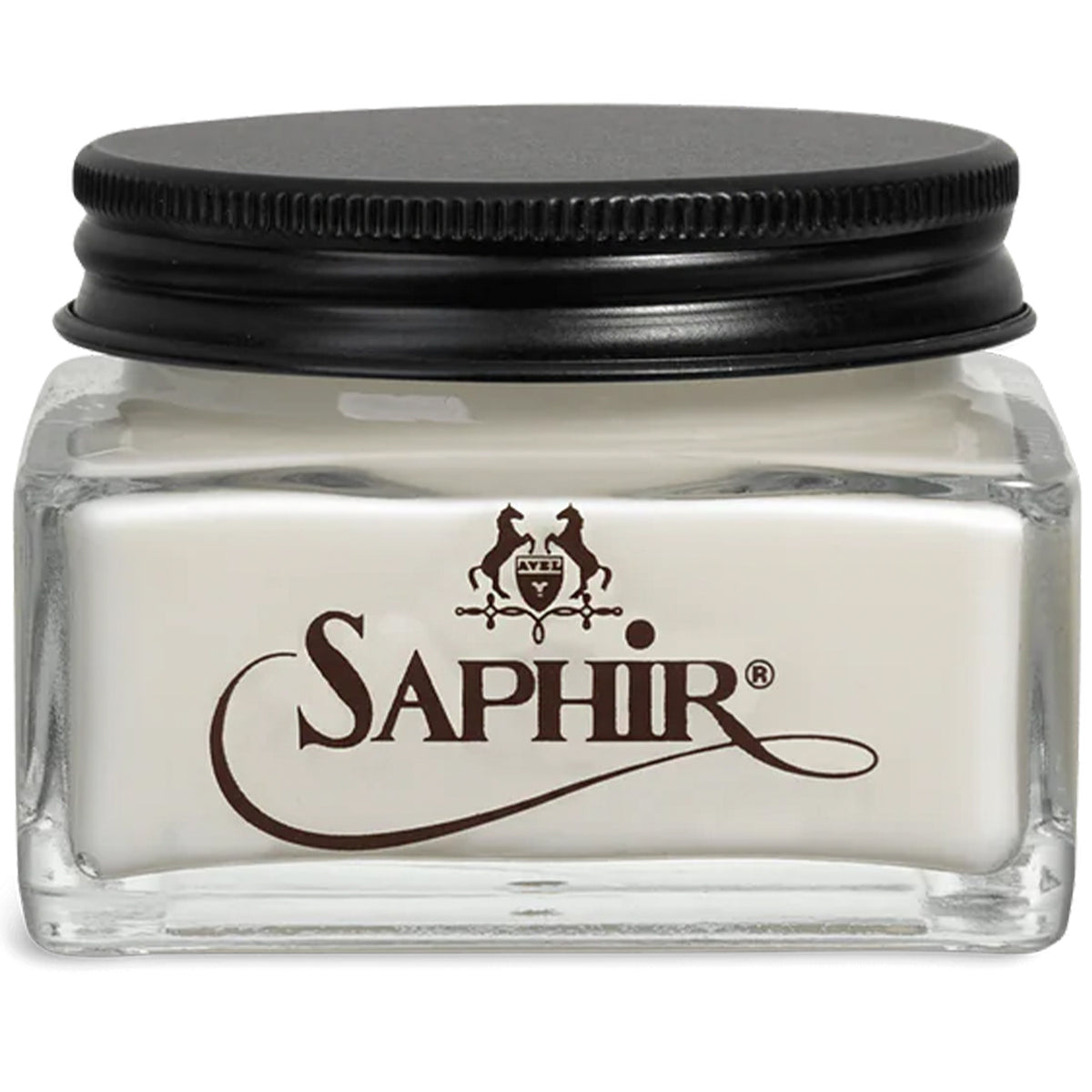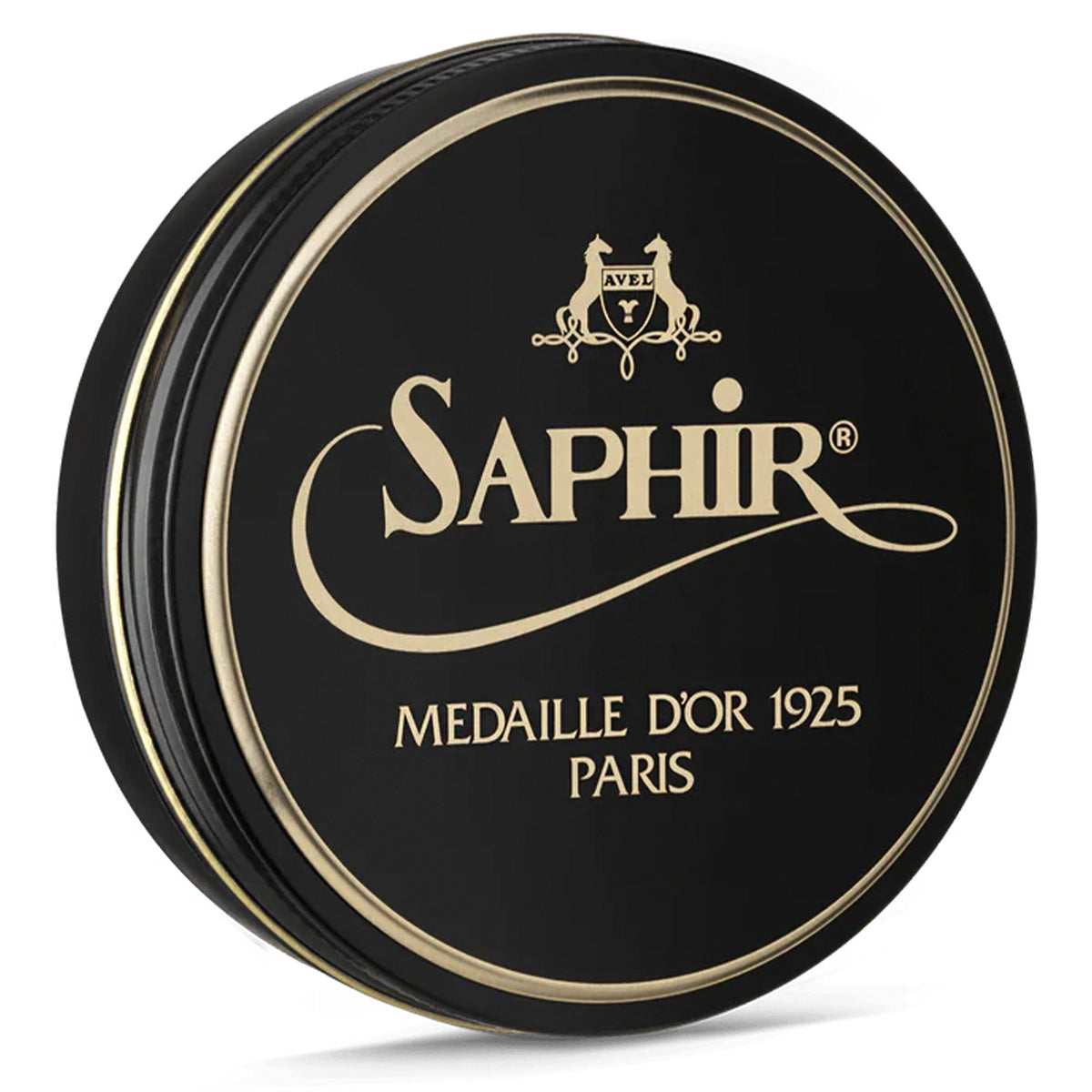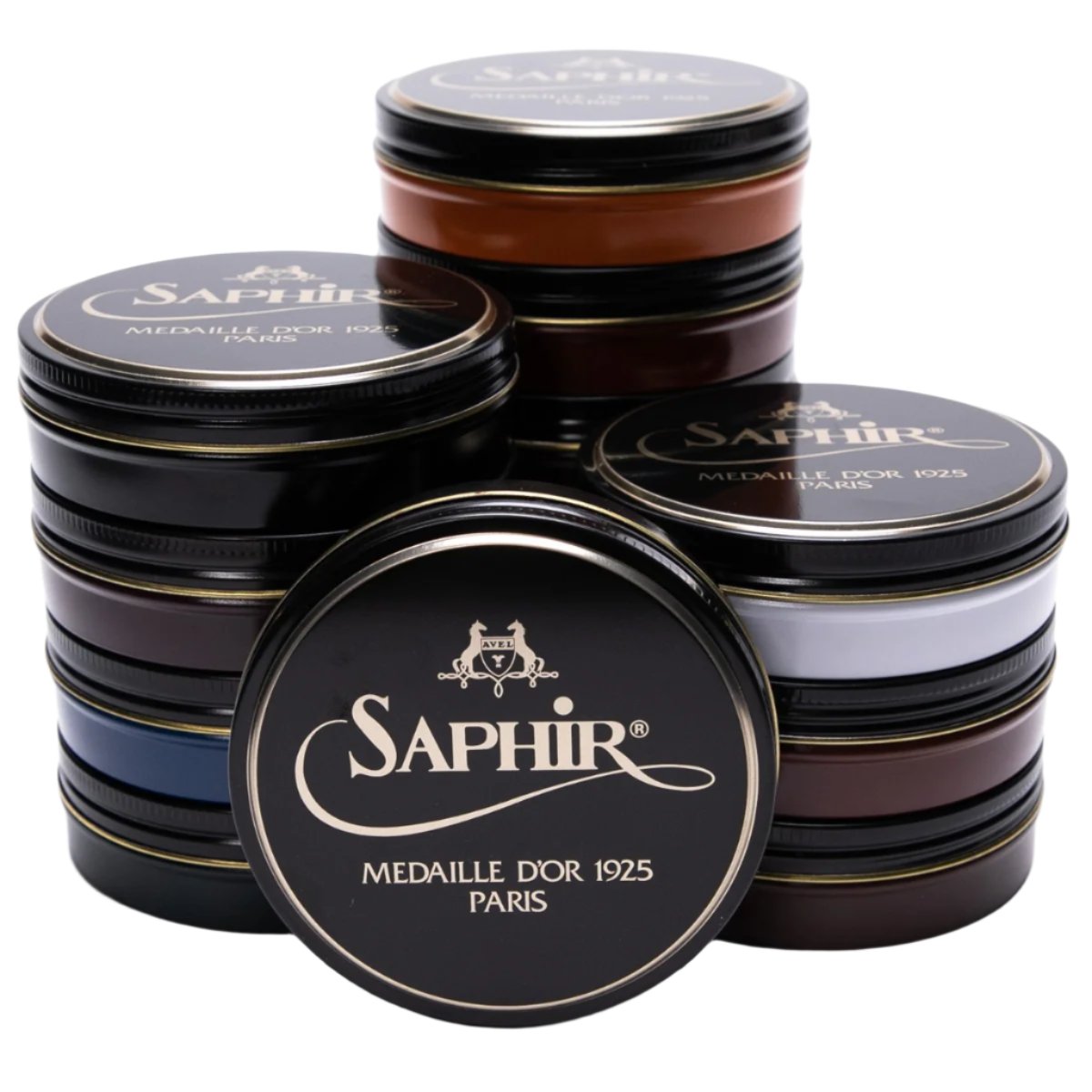George Cleverley - Interview w/ George Glasgow - Pt.1
The Hanger Project had the honor of interviewing George Glasgow Sr., Chairman of the iconic bespoke London shoemaker George Cleverley. Cleverley is widely considered to be one of the finest London shoemakers, often having its name appear next other other greats in the trade, such as John Lobb or Foster & Sons. In the first part of our interview, Glasgow shares the story of his early shoemaking days, from working with George Cleverley himself to eventually assuming ownership of the shop.
Transcription
Hi, I'm Kirby Allison, founder of The Hanger Project. We're in the Royal Arcade, here in London, in front of George Cleverley, the famous London bespoke shoemaker. We're going to go inside and see what they have to show us.
George.
Kirby.
Yeah, thanks for having me.
You're very welcome. Nice to see you.
Always, you know one of my greatest pleasures in London is always dropping by the shop. I appreciate you welcoming me in today.
You're very welcome! Always, always welcome.
You know you've been in the trade now for the better part of 50 years or.
Not far off it, some months now.
How did it all start?
Well I was working in a very old established, which is probably more like this today, shoe making company in Duke Street's and James' called Polson's garment, that's where I started in the 60s. And I've moved a bit since then, only to one other company and then started this business about 30 years ago after Mr. George Cleverley departed at the ripe old age of nearly 93.
What was it like, I mean back in the 60s. You know, how old were you when you joined?
16 .
16.
16, 17...
Which was quite normal back then, to go into trade.
Yes to take an apprenticeship, they called it, you know of electrician or carpenter. They were more bricklayer, but they were probably more than shoemaker. The shoemaker was never a thing that was probably thought of that much, you know. But I went into it because I think more than that, I was happy to have a job. You know I think that was the view then. I think it's a bit different today. You know people don't seem to think that way.
I guess over the last 50 years I mean have you seen the trade change?
Well you know, I think the trade has changed but the actual fundamental business the shoe making it hasn't changed. Styles haven't really changed. There's a few that we've added to them that are probably maybe what you'd call a little bit more fashionable. We certainly now today make more casual shoes than we ever used to do 30 years ago. It was basically shoes that were lace shoes, brogues, oxfords, semi-brogues, but the casual shoe area has come along enormously. I think that's a sign that the world is totally different today. People are more casual and they want to wear that sort of shoes. I mean you know in my day, it was black oxfords like what you got on, black full-brogues, black semi-brogues and then country shoes, brown grain shoes with a rubber sole, and then maybe racing suede shoes in a brogue or a chukka boot. But that was normally what was, what was happening in that particular time.
I mean talk to me about bespoke shoes, so I mean what leads customers to bespoke, and how is that different than, you know, your standard kind of ready to wear shoe?
Well, I put it into three categories. One is that you've got the customer that needs to have these shoes made because the novelty in his feet tells him he can't do anything else. And then you've got the customer that wants to have shoes made because, you know he doesn't want to buy what we've told him, he wants this shoe in that color with that toe shape. That's his own individuality and he thrives on that, that he's not going into the store and the store says that we got buy that that that that. That's what it is. So there is a number of people that want their own. And then of course the fit side of it. The fit is massively important. And I could tell you about the fit and talk about the fit, but the reality is you will never know until you actually have a pair made to see how comfortable and how fantastic having a pair of shoes made against the ready made shoe.
Often people tell me that in a gentleman's kind of transition to bespoke, shoes are always the last component. But then once they get there, they wish that they started with their shoes.
Yeah I think there's a lot of sense in what you just said. I don't know. I mean I just asked for a lot of people, a lot of people laugh sometimes because, you know the saying you can always tell a man by shoes? I hear different opinions. You know, some people spend a lot on their shoes, but they won't do it on theirr suit or their shirt. And then you'd say that some people do and they suit, and cheat on the shoes. But then you've got certainly a fair amount of customers that will do the whole lot. Because of my traveling to America, I do like to talk to you because that's what I'm about and that's what this business is about, and you know a number of customers would rather go to the various sections of tailors in Saville Row to have their suits made. So I still think there is a belief that, you know, to do handmade, is still very strong. And if you say that your opinion is that shoes might be the last, I won't deny that. But you know I think there's a lot in wanting to say that "you can tell a man by his shoes.
Yeah absolutely.
Yeah yeah. Well Mr. Cleverley used to say, when he was alive, he always used to say "if your feet's not right, your head's not right.
And you've been traveling uninterrupted for the better part of, really, for as long as the firm's been around. Longer if you take into account what you were doing before that.
Yeah.
I mean that's really I feel like one of the things that I find most unique about Cleverley is that anyone that's been doing business with Cleverley, has more than likely been doing business with you, you know, uninterrupted for that long.
You know that's, that's part of our business. It's in America and England. I mean it's a relationship, you know, you have your shoes made, come in and chat, "How are things?", that's what it's like here and it's like that in America in a very big way.
You know, you guys travel to the United States, to Asia, and it's either you or your son George Jr. on one of those trips so any time someone orders a pair of shoes, you know regardless of how long they've been doing it, you know they're going to do it from you or from your son.
Great!
That's incredible.
Yeah great. I mean that's family run, that's basically, you know, if they don't see me, they see him. He's the future of the business. And he's been at it maybe for over ten years now, and he knows, and he's very alert, and his legs are younger than mine so he can travel more than me, which is very important to Cleverley's, that we need to travel. And that's what makes it all happen.
So talk to us a little bit about kind of the bespoke process. You know, there's so much interest these days in the craft. But you know whenever you see a pair of bespoke shoes you don't see any of anything really that went into them. Because it's, you know they're already made up.
Yeah.
So, you know for someone that's not familiar with how bespoke shoes you know, just kind of give us the overview of the different steps.
Well I mean first of all, as we said about measuring, that is measuring the foot very carefully. I mean we make a last to the foot. Which we think is the same. With the first pair of shoes, we stock them without the soles on. So we bought the customer back in whether he lives in London whether he lives in New York as we'll transport fittings to New York, L.A., Tokyo, Hong Kong. So we realize if we don't get the customer back here then we'll visit we'll have a fitting in on the other side. The fitting of a pair of shoes is a very personalized thing with a guy, say about me and my son, but you try them on, and you do what you think is right from what your experience tells you. But that doesn't mean to say it is right for the customers. So you gotta listen to what the customer says. The customer may come to the conclusion that the customer would like to wear the shoes a bit easier, a bit closer, lots of different reasons that might be in his mind, and he is the customer. So we got to listen to him to see how he wants to do it. So after the first fitting, if that's the case, then we'll make the necessary new shoes, we'll go back into the fitting and giving back in again, and talk him through again, hopefully he'll says "that's the way I want it!". And that's what we're interested in most.
Yeah.
Well after the last, then you got what you kind of pay for first of all, is the pattern of the shoe, that's the style that the customer wants to do. First of all, do you want to in black? There's a few different weights of black - If he wants a heavy black calf, because he's going to using it as a heavy town shoe then we'll direct him into a slightly thicker weight, if it's a medium shoe that he doesn't want a lot of heaviness on around his foot, than we'll direct him there, if it's a slip on shoe then we'll probably suggest that you use a light calf. So then once we've got the leather, then we discuss the style. Now, you see around there's still maybe 100 different styles in some form or another but we say to the customer "you don't have to stay with us". You can delete or add on where you think, if you like, basically the fundamental thing about the shoe. But there's some stitching or some broguing that you want to take off or add a bit more on, that's your prerogative, it's your choice. After we've gone carefully through the style, then a paper patent is cut to that style. So last-making, patent-cutting, then you come to actually closing. That's where all these pieces that are being cut out are stitched together to form the top of the shoe. So that's what we term as the closer. So then after the closer, then the last goes back into the shoe, I mean it's the maker's time. When we say the maker, we mean not the whole maker, we mean the guy that puts the bottom of the shoe on, that's the sole, insole, the welt, the soles and the heels, which probably will take about two days to do a pair of shoes. And then after that the shoe is made. You know they're left on the last for a week. At least to dry. Because they are wetted when they're made for the leather around the block. So they left to dry for about a week and then we obstruct the last from the shoes. I mean then they go to the tree maker where we have fitted trees made. When the trees are made, then we have them back and then they go to the hand polisher, who spends about a week on them. You know, actually polishing them up to bring them up to a nice patina.
How many people have like, you how many hands has a pair of bespoke shoes go past them?
Well, you got the last-maker, cutter, closer, maker, finisher, tree maker. Six.
You know when did you meet George Cleverley?
That's a question, probably back in the 70s 80s, yeah in the 80s. One or two of the guys that used to do some closing or some balm making from Mr. Cleverley used to do a bit for us. Cause I was in another company then. I mean of course I used to, you know, Mr. Cleverley didn't open on Saturdays, but I did. So some of the guys that done, done some work for Mr. Cleverley would drop it off to me and I would pop it round to Cleverley in the week and then he was round in Court St. where he operated from. I'm trying to think now, but I expect early 80s. Yeah.
And you know I mean he's got such a famous name. I mean what was it about Mr. Cleverley that really set him apart?
Well I mean he was the dawn of the icon of shoemaking. I mean George didn't know it. But I expect he was probably making shoes from when he was very young because he worked with his dad and his brother. And then Anthony, his nephew, come along, see there's 30 years difference between Anthony and George. You know, George knew. But then, you know years and years of experience taught him that, you know, which I thought wow, you know, this guy does know. And what were some of the things that, you know kind of the sayings that he kind of passed on to you? I mean whenever you think back about how he influenced your career, you know, what do you think of? Well I think the unique thing about George is that every customer was the same, he didn't worry about it didn't matter to him, you know, everyone had a head and two arms and two legs, and he was making a pair of shoes. He was humble like that. That's going to make you a pair the same as this customer or that customer.
And how did, I mean the Cleverley toe kind of chiseled suspiciously square, how'd that come about?
Well I mean, I mean, I don't know how it actually come about because you know that was done in the company where the Cleverleys ran in Sussex and they started it there. I mean in Cleverley's time, if you didn't want that, he didn't, you know, he said he wouldn't make a round toe, he wouldn't make a pointed toe, they all had to be suspiciously square as he called it. So that's what his signature was. And that's what he said. This is what I do.
And so that's what kind of the iconic square Cleverley toe came from.
Yes.
You guys still carry forward today.
Yes. I think you still see people, when I look into shops you see people trying to emulate it in some form or other. But you know that's life you can't take a patent out on a shape. Cleverley, if you went to Cleverley, that's what you got. And also he made you any lace shoe you'd want. And he'd make it elastic sided, which I think he was instrumental of inventing. I think he did invent it.
Yeah. What's the story with the Churchill?
Yes it was Winston Churchill, he was a Cleverley disciple, which is this shoe here, this is the shape. And this is the design. It's a unique robe with a sort of imitation lace. That's where he started because he thought it was slip on that he fought to have this here the elastic. It didn't do it as much as lacing, but at least it gave you some some support in the side of it. So you didn't rely on, say this, or the shoe being close on the foot to hold it on.
Yeah.
So he reluctantly made that sort of lot, but he loved making loads of elastic sides. But he was reluctant to make the loafers.
But now the world is different. More people are more casual, more people do wear loafers. So we do more of them when we ever done.
Yeah.
Because of that.
The Baron de Rede, which you know, I think was one of your most prolific customers, quite iconic, I mean, how how did you prefer his shoes to fit?
Very close. Yeah yeah. But as he said to me one time, he said "George, make no mistake, I'm not doing a lot of walking". You know. He said "I'm here to today we should sit in this corner".
And "I'm here today, and when I leave here, I do five steps and the Claridge's car takes me back to Claridge's". So that's. So it's not really yeah.
He wasn't getting blisters.
But that is one guy think that probably will never ever, I don't know, Cleverley was with him before I asked Cleverley when he was 90 and I said "how many pairs do you think you made"? He said "let's put it this way. I can't remember any time in my life I wasn't making him shoes". So we anticipate he might have had about 400, 500 pairs.
Wow.
"Now Mr. George I'm going to donate these to you. Now what I'd like you to do is put them in the window, because my shoes are very very nice. And it will give you some customers". Which actually we've done that. And he was 100 percent right.
You know, you've been in this business for the better part of almost 50 years which was incredible. And you you know, GJ Cleverley has been going at it for the better part of three decades. I mean where do you see your role in terms of kind of protecting the craft and really carrying on this tradition of handmade bespoke shoes?
Well to try and summon as many youngsters into this business and that's what we constantly pay an enormous amount of attention to, to try and entice people to come in and we teach them. We've got a lot of knowledge upstairs, and when we go up there, you will see there's one two three youngesters there that have been with us now for some time, and that is me a great deal of hope that is going to carry on, because they're, you know sort of late 20s or early 30s, and then we got one of two, now with, we have is pretty much like the cottage industry, we've got one or two maker, or more than one or two, a number of makers that work at home for us, that might work in the garden shed. We've got one or two apprentices with them. And all you can do is keep going to the road and hope that they'll stay and they'll be part of your team. And we try and try all the time.


